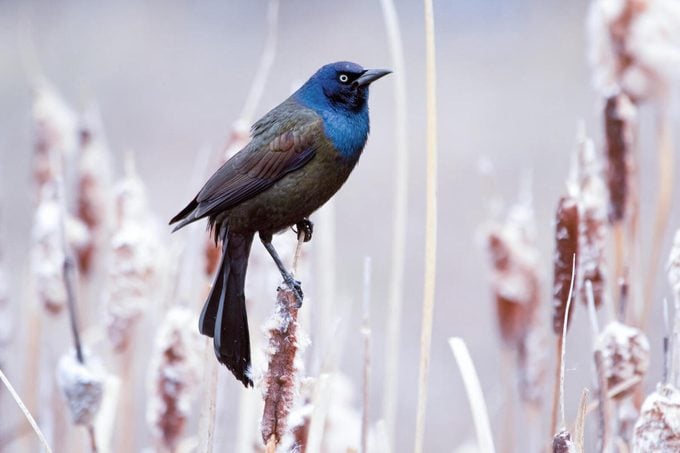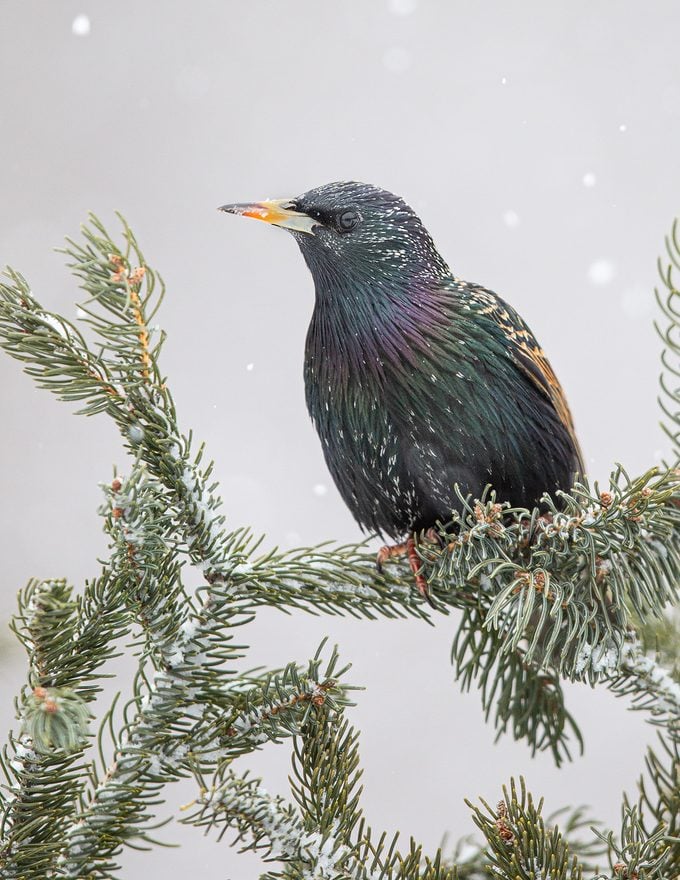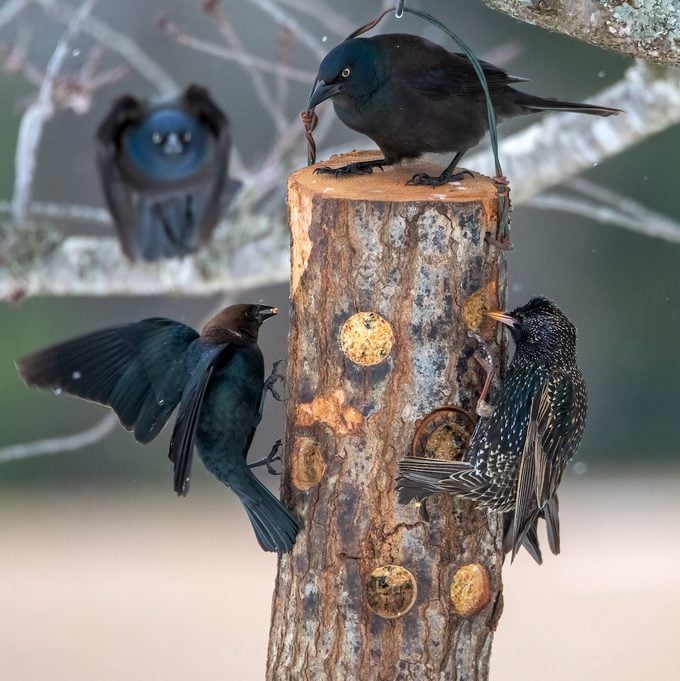Grackle vs Starling: How to Tell the Difference
Updated: Dec. 04, 2023
These common black colored birds with shiny feathers are easily confused! Learn the key differences between a grackle vs a starling.
Grackle vs Starling Identification Basics
They may be known as aggressive bully birds to some people, due to their tendencies to hog food at bird feeders, but it’s time to look beyond the reputation of European starlings and common grackles! Learn the differences between a grackle vs a starling and find out what these birds look like.
Meet more backyard birds with a bad reputation.
How to Identify a Common Grackle

Common grackles—which are blackbirds—have lankier bodies than most blackbirds, with a long tail and dark legs. Look for their shiny feathers with a bluish head, purple or bronze body, and yellow eyes.
You can also pay attention to their bills, which are thick, dark and curved.
Common grackles are a familiar sight in the eastern and midwestern U.S. year-round. During their breeding season, they’ll extend their range up to southern Canada. There are also other types of grackles in some parts of North America.
If you think you see a group of common grackles, listen closely for a combination of squeaks and croaks accompanied by quick, high-pitched whistles.
Here’s how to get rid of grackles and blackbirds at feeders.
How to Identify a European Starling

The European starling, as the names indicates, originated in Europe. The non-native bird species was brought to North America and introduced here in 1890. They’re a commonly sighted bird year-round throughout both the U.S. and southern Canada.
Meet another nonnative undesirable backyard bird: the house sparrow.
When identifying a European starling, you’ll probably first notice their dark feathers with purplish green iridescence and white spots in the winter, in addition to a long, thin yellow beak. Starlings are blackbird-sized with short pointed wings, short tails, and pinkish legs.
Did You Know: European starlings are truly impressive mimickers. They can learn and imitate the songs of up to 20 other birds! If you’ve ever passed by a starling flock on telephone lines or in trees, their calls stand out and are a distinct stream of rattles, whistles and purrs.
Learn how to get rid of pigeons at bird feeders.
Grackles and Starlings Flock Together in Groups

Since they share similar habitats and feeding habits, European starlings and common grackles often flock together in large, rambunctious groups alongside several other types of blackbirds. These multispecies gatherings can comprise millions of individual birds.
Learn how to identify red-winged blackbirds.
“I looked out one day and saw that my feeder had been taken over by European starlings, brown-headed cowbirds and common grackles (above),” says Birds & Blooms reader Penny Rice of Oakland, Mississippi. “The grackle in the background is eerily watching from its perch!”
Next, learn everything you need to know about the American crow and the common raven.




















